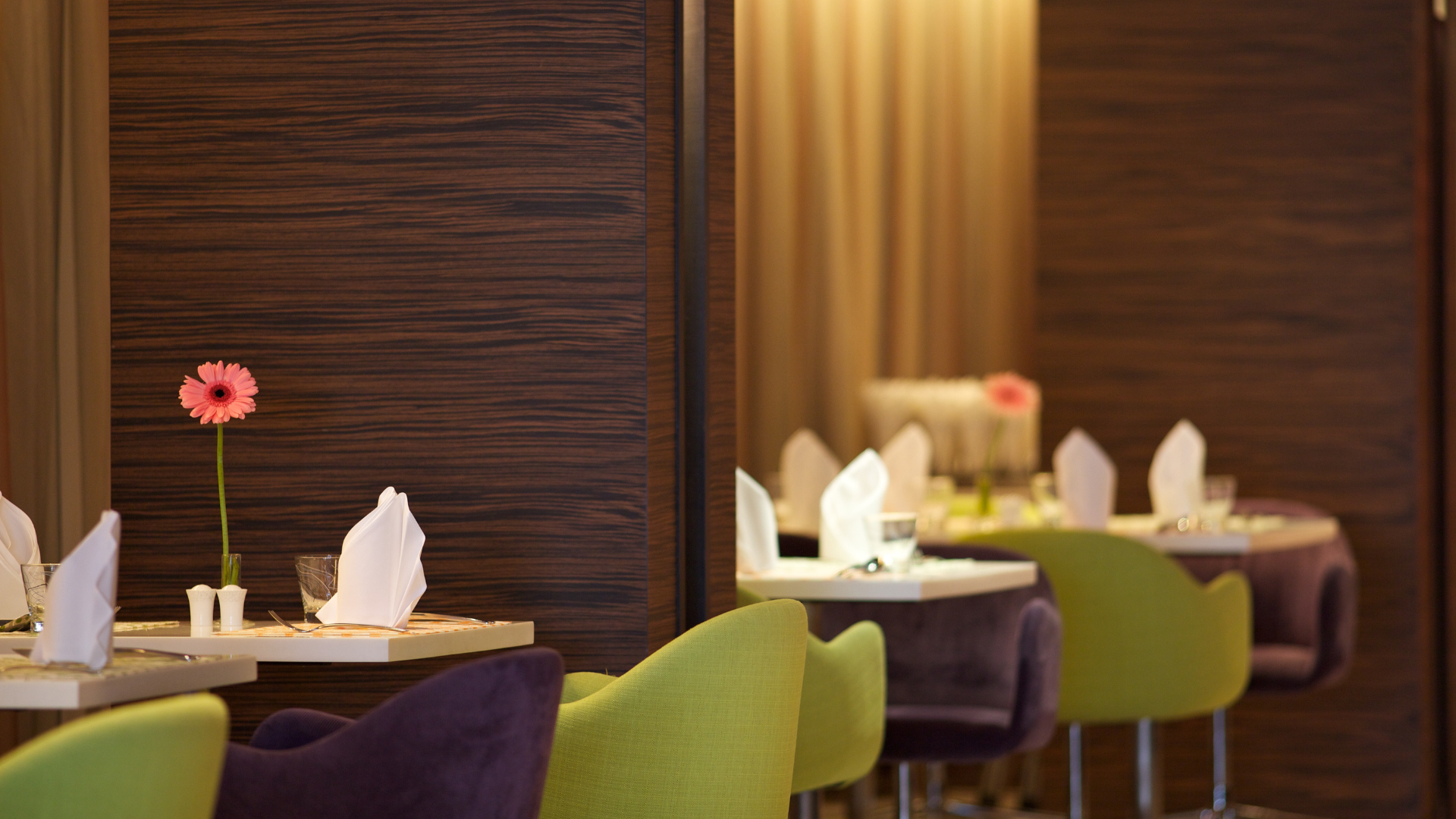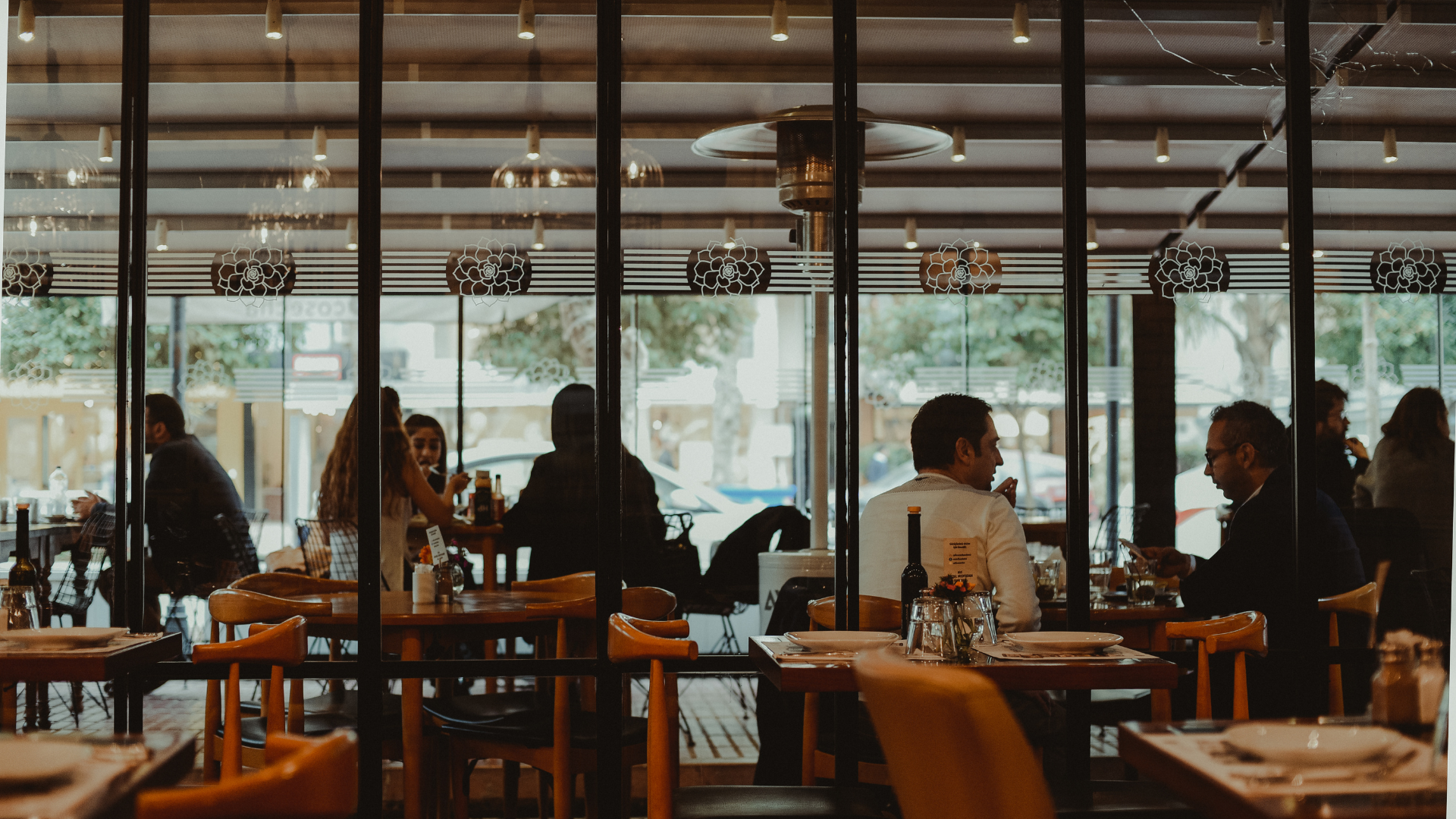Vibrant restaurant outlooks can be created when owners are aware of vital aspects that can enhance the establishment. Here are 4 interesting ways to use decor to create a vibrant restaurant outlook.

Image Credit: Canva
Choosing a theme is an important step in creating a dynamic restaurant through its decor as it sets the tone and atmosphere. First. restaurant owners need to determine the restaurant’s focus and customer base. For instance, a Mediterranean restaurant may have a nautical theme of the sea coast that are depicted in shades of blue and white, while a city concept cafe can go for a simple and minimalist design that features a monochromatic palette and white lines. This conceptual foundation guides subsequent design decisions — from colour palette and lighting to furniture and decor.
Bright colours like red, yellow and orange can stimulate interest and conversation but accent walls in these colours can create a focal point without taking up too much room. Additional lighting options such as pendants, lamps and wall sconces enhance the theme by adding warmth and character. Furniture should be comfortable and fit the theme, whether it is a wooden table for a more rustic dining room or modern geometric chairs for a contemporary space.
Decorations, including artwork, plants and unique artefacts should reflect the chosen theme and add visual interest and authenticity. Incorporating local artwork can personalise a space and become a conversation starter while plants and herbs bring a sense of nature indoors and lighten the mood. From menu design to staff uniforms, consistent branding reinforces the theme and enhances the entire dining experience.
Seasonal updates and interactive elements such as photo walls or themed events keep the decor interesting and attractive. By carefully choosing and implementing a theme, a restaurant can create a dynamic and welcoming atmosphere that attracts guests and encourages them to come back and share their experiences.

Image Credit: Canva
Creating vibrant restaurant decor also relies on the strategic use of textures and materials to enhance visual appeal and create a welcoming atmosphere. From the beauty of a reclaimed wood table to the sophistication of metallic tones, different textures add depth and interest to a space. Wood panels on the floor, walls or furniture evoke warmth and realism — making diners feel comfortable and safe. Complementing wood with metal elements such as industrial-style lamps or steel bar stools presents a modern style that balances comfort with a touch of sophistication.
Adding soft fabrics to chairs and benches not only improves comfort but also adds a touch of luxury. Leather or velvet seating creates a luxurious atmosphere; thus, inviting guests to relax and enjoy their dining experience. In addition, the use of natural materials such as stone or marble for pavements and floors brings elegance and durability. These materials come in various types and choices to choose from — polished marble bars to carved stone walls and these can play into the restaurant’s unique character. Fabrics play an important role in adding layers of texture.
Selected fabrics for curtains, table linen and cushions can inject colour and pattern — making the space seem more vibrant and lively. For example, a fabric with bold patterns can be visually exciting while soft and neutral tones can balance design elements. Incorporating greenery into plants and living walls not only shows natural textures but also brings freshness and life to the restaurant. Mirrors and glass elements can add another layer of lightness; thus, creating an open and airy feeling. By carefully combining these types of textures and materials, restaurants can achieve a dynamic and stimulating environment for diners and enhance their dining experience.

Image Credit: Canva
Music and ambience play an important role in creating a lively dining atmosphere — attracting the attention of guests and enhancing their dining experience. Putting together the right playlist can set the tone for the restaurant, complement the decor and match the overall theme. For example, a Mediterranean restaurant can play classical music that evokes the beauty of the local beach while a city cafe can choose contemporary music that is loved by locals as well as some new customer.
The sound and style of the music must be carefully balanced to bring the room to life. Sound design is also important. In this case, soft furnishings, such as upholstered chairs, rugs and carpets can help absorb sound while reducing noise which then allows for a conducive environment for conversations. Audio panels can also be placed to control audio projections and surround sound — creating a more comfortable listening environment. In addition to music, incorporating interactive and sensory elements can make the atmosphere more vibrant and exciting. For example, a dedicated venue for live performances and open mic nights can attract large crowds and create memorable experiences.
Lighting is an additional function. Warm ambient lighting and dynamic accent lighting can enhance key areas and create a welcoming atmosphere. The combination of light and sound should be balanced, with dimming lighting that adapts to the mood of the music — allowing for a smooth transition from day to night. Together, the music and atmosphere set by the restaurant helps in creating a vibrant and dynamic environment that encourages customers to stay longer. By carefully incorporating these elements, restaurants can transform their spaces into dynamic and emotionally-rich spaces that stand out against their competitors.

Image Credit: Canva
Branding and logos are important to create a cohesive restaurant decor and to attract customers. Functional branding and identification can help to grow the business — becoming a way to be identified and recognised. A good communication strategy that can be designed based on the theme the restaurant and its target audience will have the opportunity to create a memorable and unique experience. For example, a modern bistro can use bright, colourful and monochromatic signs while an old-school restaurant can use retro signs and neon lights to evoke nostalgia.
Once designed, a logo can become a useful decorative element. Eye-catching elements such as neon signs, billboards or custom signs can serve as identification while also becoming a way attract attention and add personality to a location. These elements should blend in perfectly with all decor and enhance the character of the restaurant.
Consistency is important and in this case, the style, colours and fonts used on the signage should reflect what is on the menu, employee uniforms and other key concepts of the restaurant. All of this will make the restaurant stand out and be remembered.
Interactive signs such as photo walls or bulletin boards can engage customers and encourage them to share their experiences on social media; therefore, increasing awareness of the brand and the overall place. Additionally, seasonal changes in themes can keep decor fresh and meaningful — attracting new customers while keeping loyal ones coming. Ultimately, the logo and signage does not only enhances the restaurant’s aesthetic but also creates a cohesive and immersive environment that connects with customers and promotes a fun and enjoyable dining experience.

Need help with interior design? I-dzine is your answer to it. We are experts in transforming space from virtual to reality. Our expertise in renovation design, oversight, and management ensures that your property is well-designed. We relentlessly focused on delivering meticulously created, beautiful, functional designs.